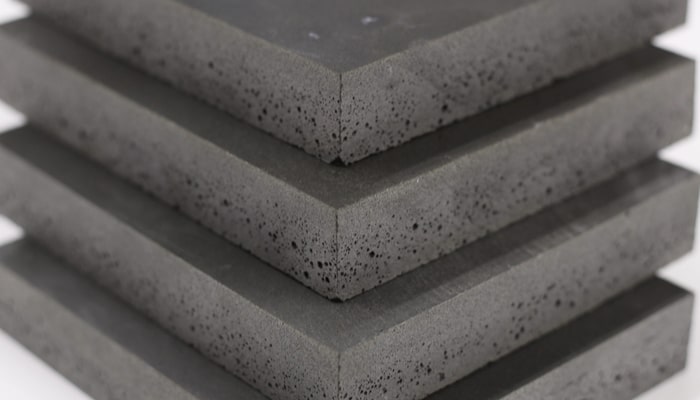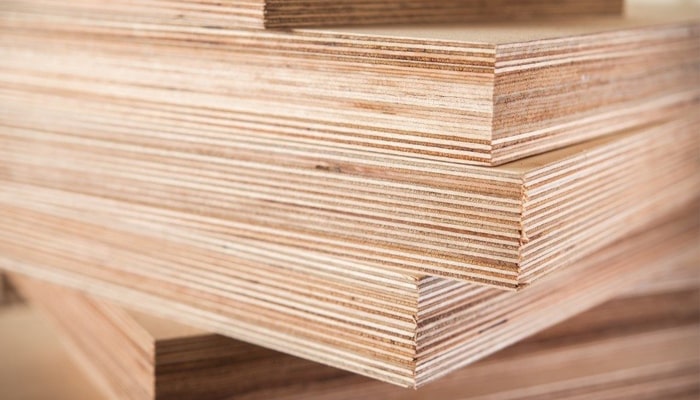There are so many options of materials to build some type of deck, deck, patio, or plank for a boat or deck. Two commonly used building materials here include Coosa Board and Marine Plywood. Both are very useful, but they are also very different.
Let’s figure out what both Coosa Board and Marine Plywood are, what makes them similar and different, and what both are commonly used for with A1 Plywood.
1. Concept
1.1. What is Coosa Board?
It is a type of engineered wood a no-rot composite sheet material primarily used for coring and decking applications. It’s composed of high-density polyurethane foam reinforced with layers of woven roving and continuous strand fiberglass.
It’s structurally superior, doesn’t absorb water, and weighs 30-40% less than marine plywood. Coosa Board is designed to be extremely strong and durable, impact resistant, and more.
It is often used in marine applications, as it is waterproof and non-absorbent, so it won’t absorb moisture or rot. At the same time, it is also very resistant to pests.
Even better is the fact that this product is also designed to be extremely lightweight and easy to work with. Just for reference, it can be up to 60% lighter than your average piece of marine plywood.

1.2. What is Marine Plywood?
Marine Plywood is an exterior structural panel, sanded on both sides, most commonly made from Douglas fir or Pine. Other species of hardwood may also be used for marine plywood, usually in the Marine (boating) industry.
All of the layers are designed so that the veneers are perpendicular to the last layer. So, if one layer has the veneers facing North to South, the next has them facing East to West, and so forth.
This creates what is known as a cross-grain pattern, which allows for excellent structural integrity, weight-bearing, screw holding capabilities, and great overall strength.
Using heat, adhesives, and pressure, these veneers are formed into solid sheets. Plywood comes in many grades and types, as well as in both exterior and interior ratings, and can serve a very wide range of purposes from the shed and house building to the building of boats and much more.

2. Similarities of Coosa Board and Plywood
The one thing that makes these two products similar has to do with the application. Now, plywood does of course have many different applications. If we are talking about marine plywood, one of these applications is for the building of boat decks and sometimes walls.
This is also the case for Coosa Board. Building boat decks and walls is the number one purpose that Coosa Board serves. You could say that it is specifically designed for this exact purpose.
3. Differences between Coosa Board and Marine Plywood
3.1. How They’re Built
Coosa Board is made with fiberglass reinforced polyurethane, whereas plywood is made by gluing and pressing together wooden veneers. One is a composite material that is similar to plastic or rubber, whereas the other is a type of engineered wood.
To produce marine plywood, manufacturers use naturally water-resistant tropical hardwood. They choose only the highest quality grade of veneers. This ensures that the resulting plywood doesn’t have any defects. It won’t have core gaps even when you cut the sheets.
3.2. Grades
Although Coosa Board does come in varying thicknesses, it’s generally all one grade or type. Plywood, on the other hand, comes in many different types, grades, and ratings, each of which is best used for a specific application.
3.3. Moisture Resistance
One of the biggest advantages that Coosa Board has over plywood is that it is non-absorbent and even 100% waterproof. This is exactly why it is used for so many marine applications. It’s just not going to absorb water or rot, which therefore also makes it pest-proof.
Plywood, on the other hand, even the best kinds, is usually not waterproof, at least not 100%. Although marine plywood is close to 100% waterproof, it may still begin to absorb moisture over time.
3.4. Weight
Coosa is 1/2 the weight of marine ply, therefore making it much easier to work with.
3.5. Durability
Coosa Board does tend to be more durable and longer lasting. It just doesn’t degrade as quickly as plywood does.
3.6. Structural Integrity
The one advantage that plywood has over Coosa Board is that it is better for structural purposes and weight-bearing applications. You just wouldn’t use Coosa Board to build a house like you would plywood.
3.7. Cost
Coosa Board can be much more expensive than plywood, up to two or three times the price for a comparable sheet.
4. Which of these two should you choose?
The bottom line here is that if you need something 100% waterproof and long-lasting, for things like boats, trailers, and subflooring, then Coosa Board is the way to go.
If your two primary concerns are cost and structural integrity, then plywood is the better of the two. Moreover, if you need to build sheds and furniture, plywood is also your best option.
5. A1 Plywood – Prestigious and quality Plywood factory
A1 Plywood is committed to the prestige and quality of products, ensuring that Plywood panels are always delivered to customers according to requirements and designs.
We own a direct furniture factory in Vietnam, with a team of skilled carpenters; each product is made carefully from the stage of choosing boards to construction and installation.
The factory accepts orders to produce Plywood boards based on the correct sizes and measurements as required, and delivery on time.
The above is the differences between Coosa Board and Marine Plywood, based on it customers can choose the suitable wood.
Related keywords: Coosa board vs marine plywood, composite marine board, plywood fiberglass
